Guest blog post by Amy Alvis
I was looking on Pinterest for a lab to use with my students to teach them the scientific method. The students will have science fair project to do at the end of the year, and I wanted to take them step by step through the process so that they will know exactly what to do for their projects.
I found a gummy bear lab that looked fun, but I wanted my students to follow a more complex scientific method model. I decided to create my own lab worksheets which you can download for free from my TpT store.

To begin the lab, I gave my students the question we were going to test: What solution will make the gummy bear increase its mass and length the most?
Next, they came up with their hypotheses. Since we had not gotten to our physical science unit yet, I explained was a solution was. We brainstormed ideas about what solutions they wanted to test. They decided to test sugar water, salt water, vinegar and water, lemon juice and water, food coloring and water, rubbing alcohol and water, and soda and water.
We then discussed what materials we would need to conduct the lab (we added things as we did the lab and saw that additional things were needed). Next we discussed the control (plain water) and the variables. They listed the dependent variable (mass and length of gummy bear), the independent variable (the solute – what was added to the cup of water) and the constants (amount of water, amount of solute, and time the gummy bear will be in the solution)
We filled in the procedure part of the lab sheet as we did the lab. The students worked in group of 3 or 4. The first thing we did was find the mass and length of the gummy bears.
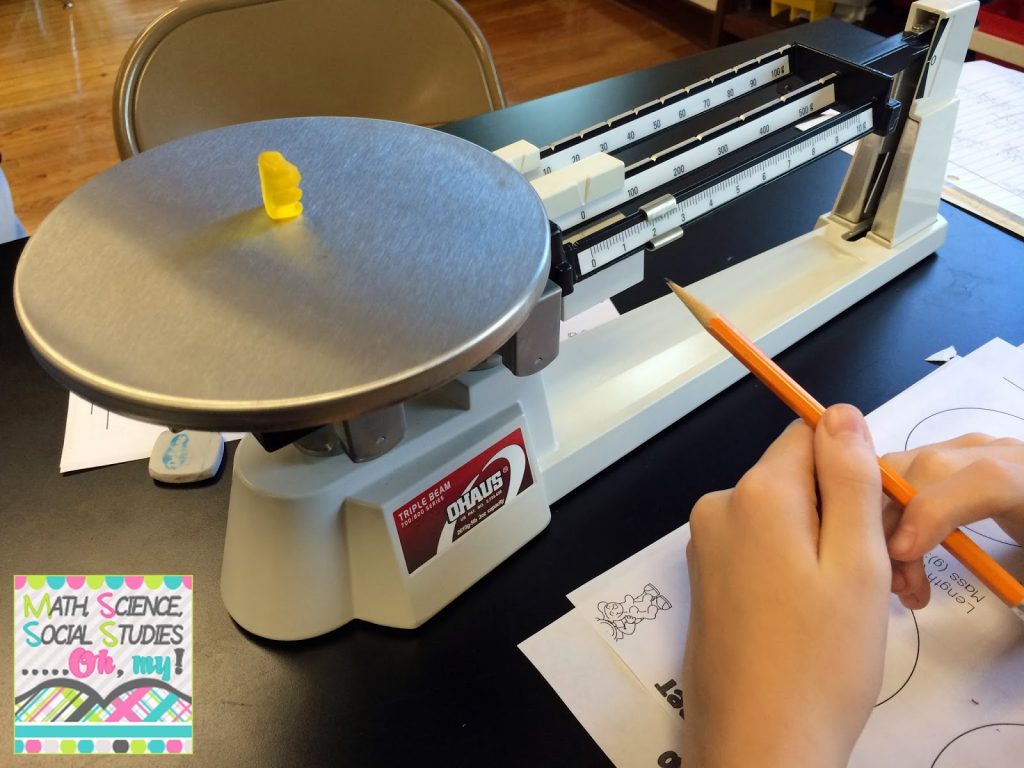
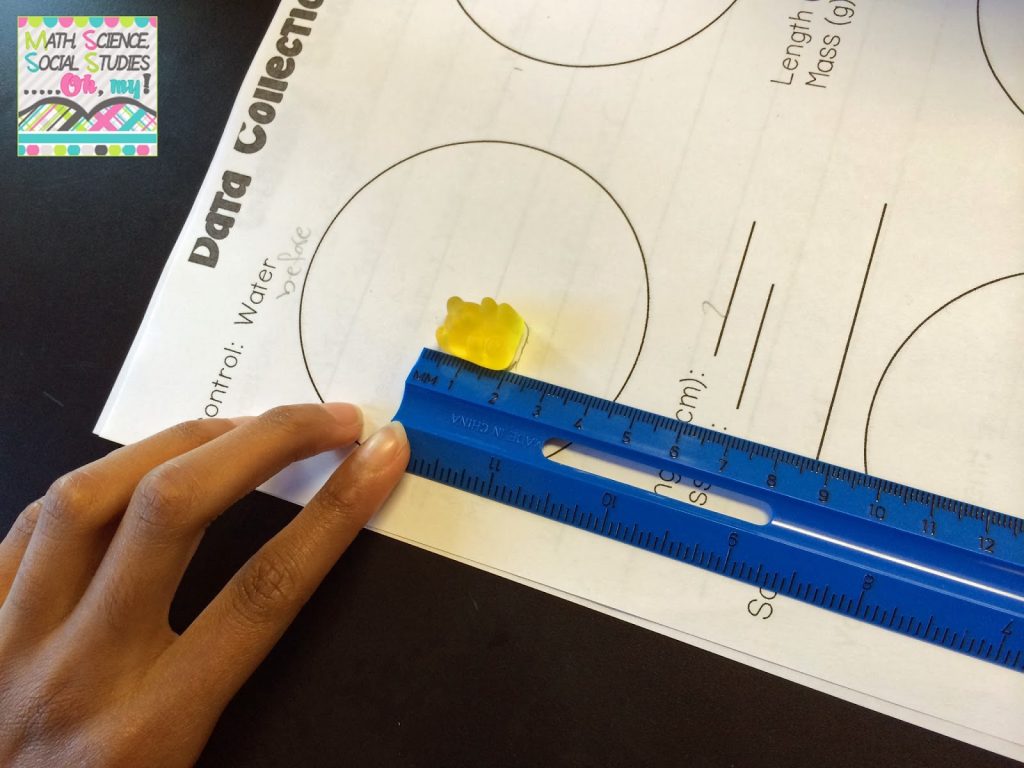
Then the students measured out 50 ml of water to put in each cup.
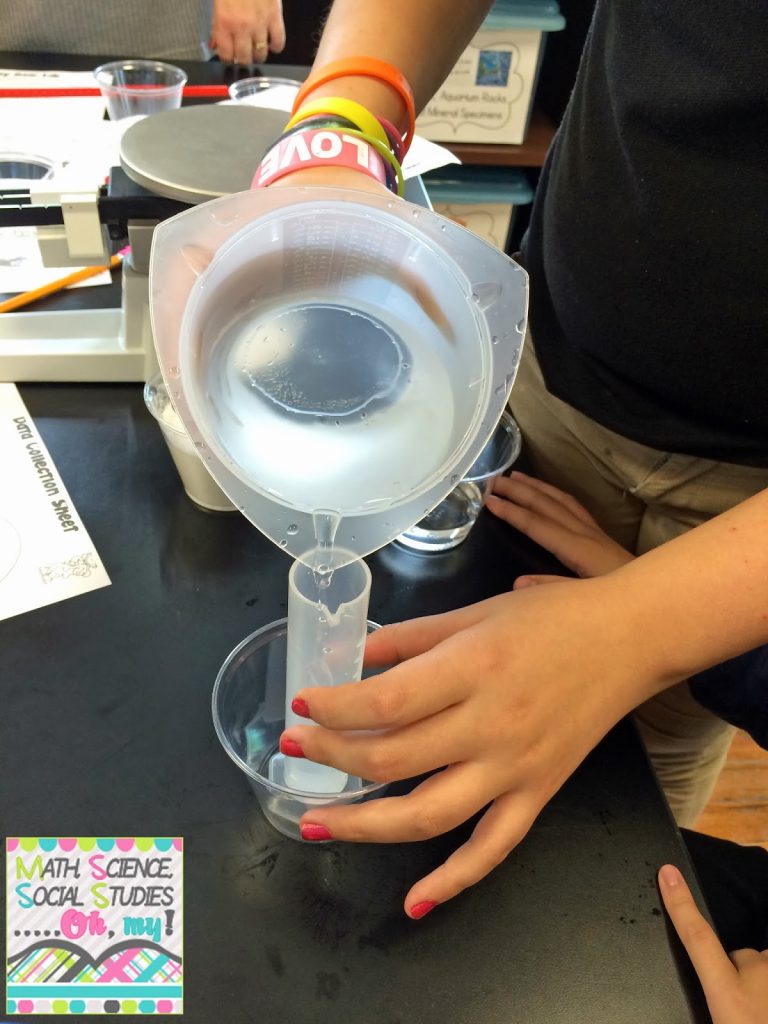
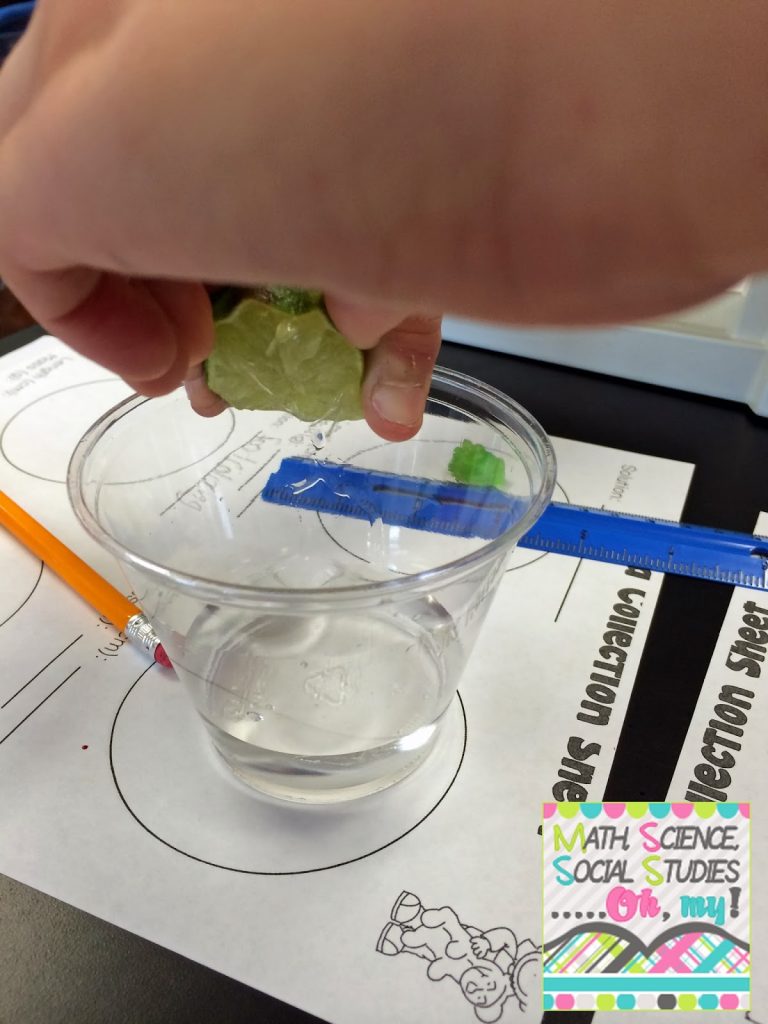
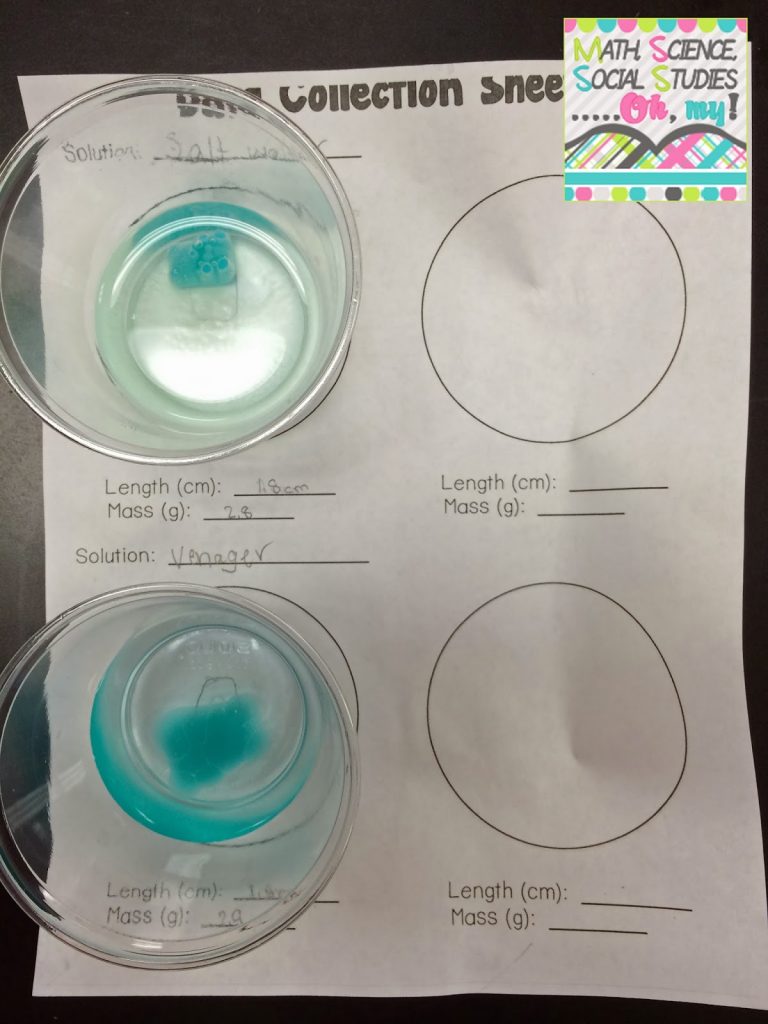
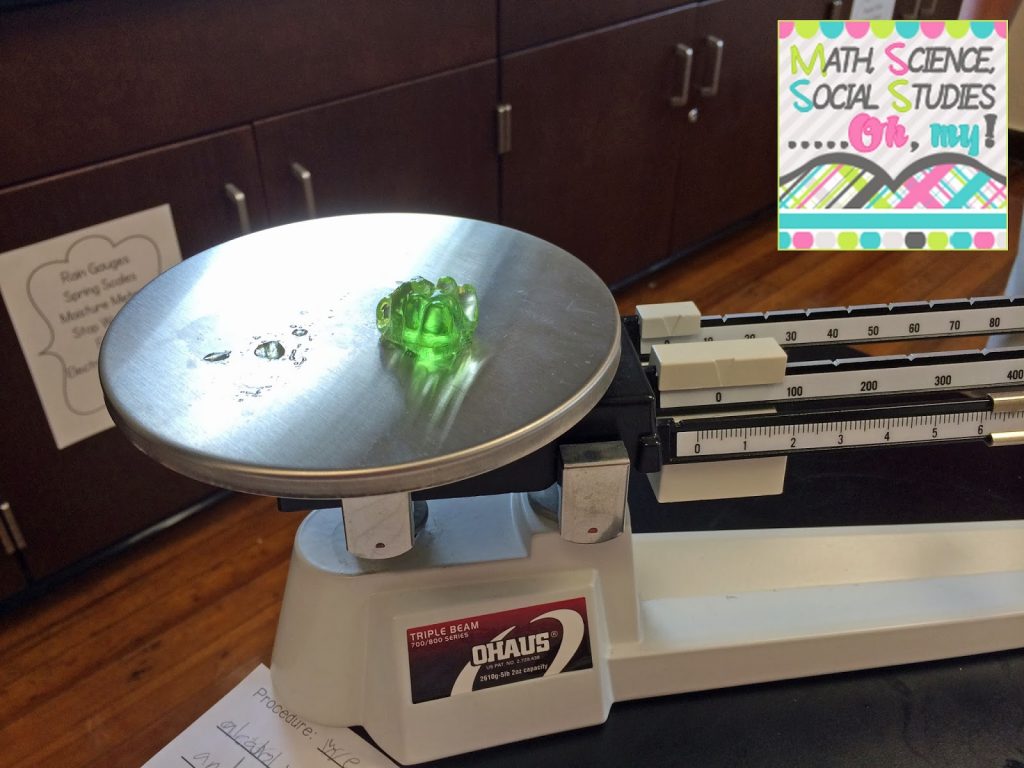
They then recorded the information on their lab sheets.
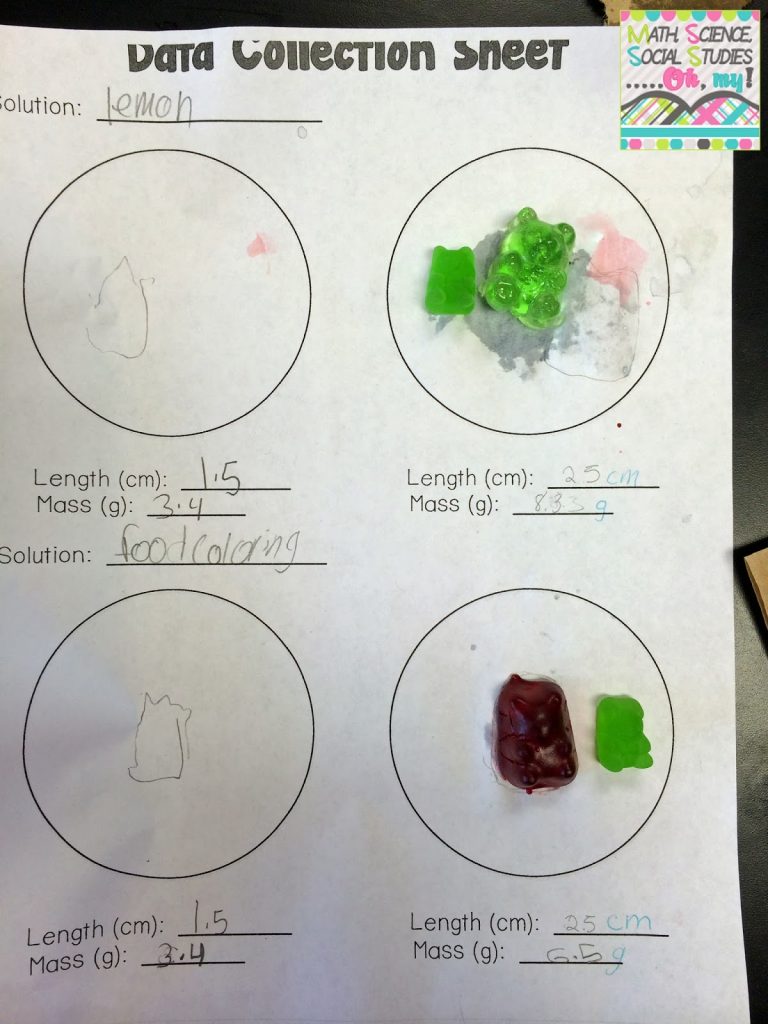
This was the first time I had done this lab and it surprised me that the gummy bears grew so much.
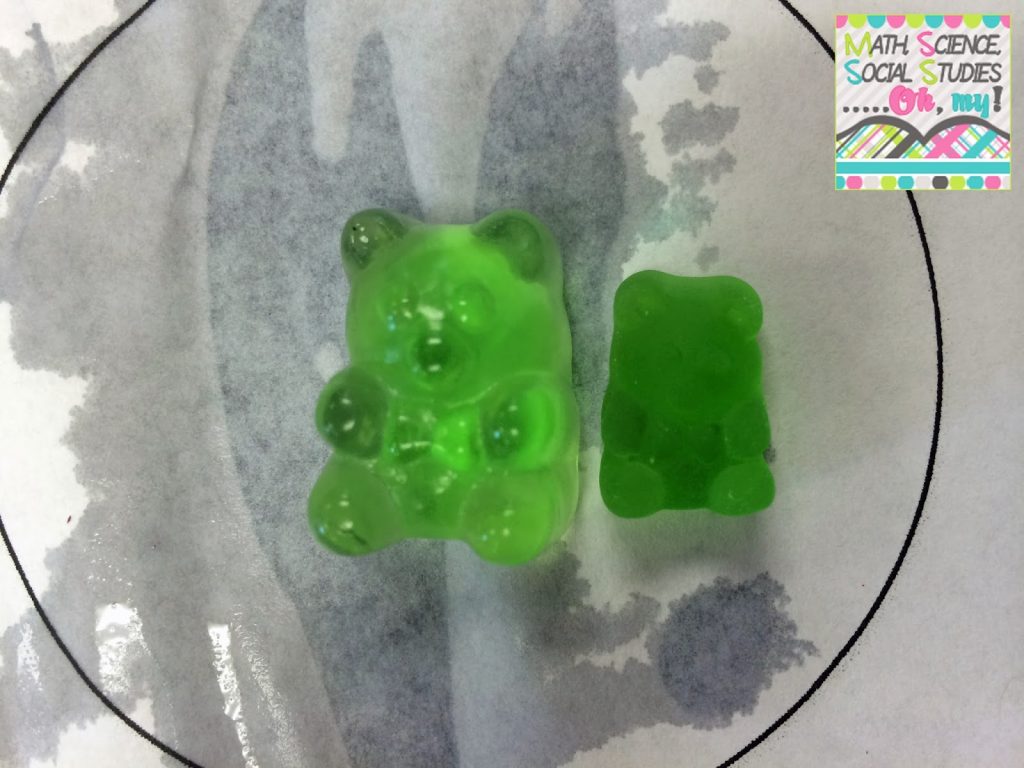
Once the data was collected on the lab sheets, we transferred the data to a chart that the students added to their science journals. Most groups found that the vinegar, lemons, and food coloring made the gummy bears gain the most mass.
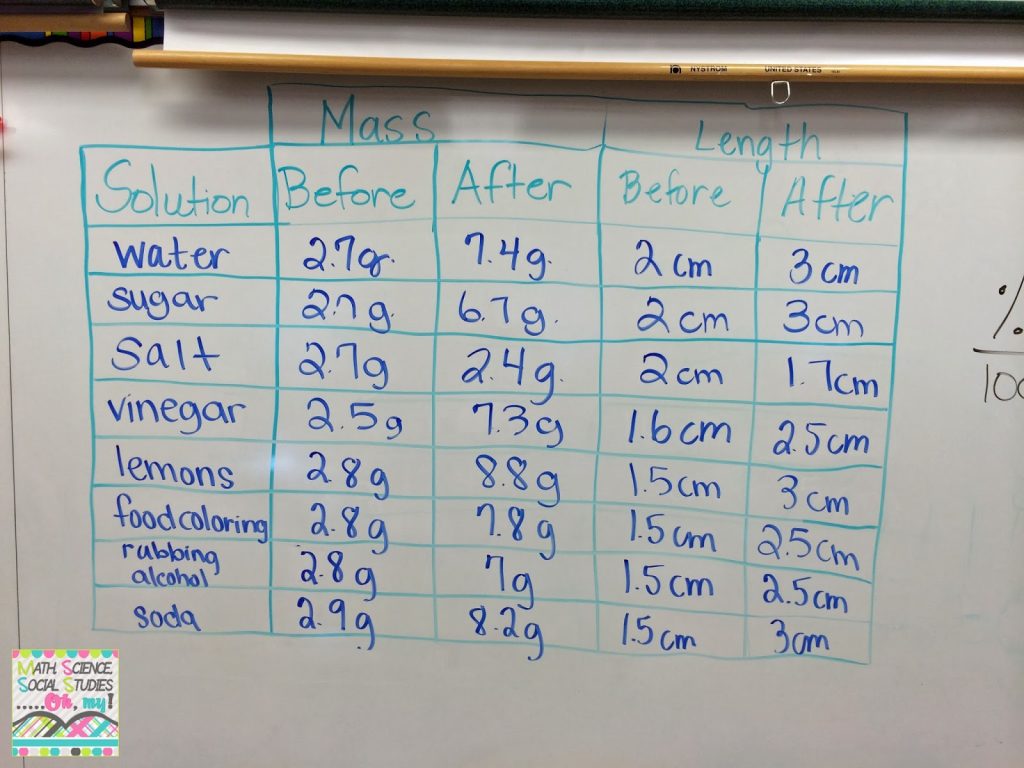
They finished the lab by writing down their conclusions on the lab sheet. If you didn’t download the lab sheets for this lesson, you can click this link to download them now. Thank you to Laura Candler for allowing me to do a guest post on her blog!
Amy Alvis lives in Indianapolis, Indiana and teaches 5th and 6th grade math, science, and social studies. She is the creator of the blog Math, Science, and Social Studies .. Oh, My! You can find more free activities for these subject areas by visiting her blog.